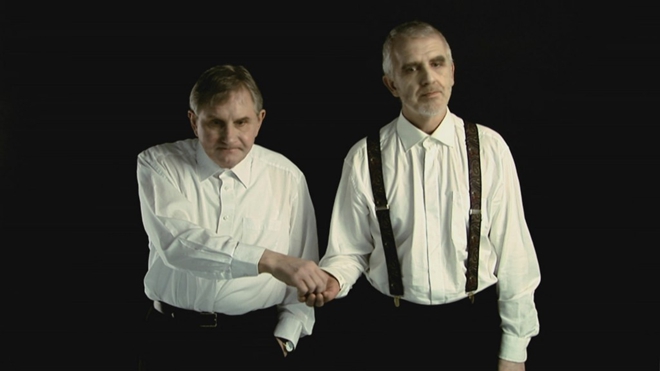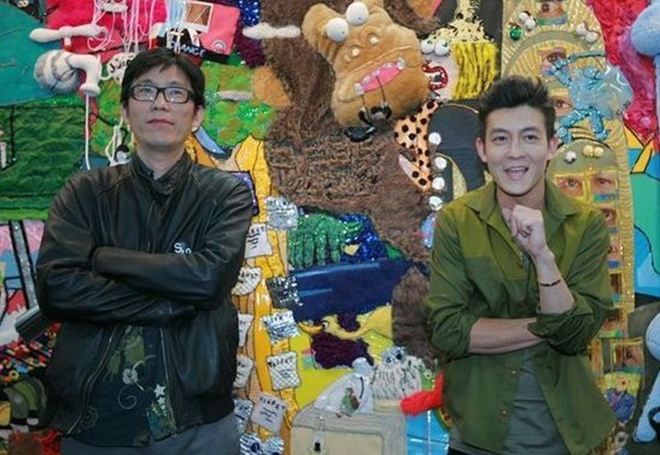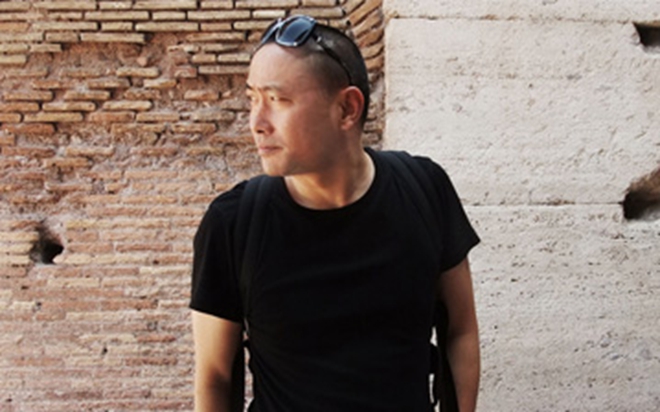Artists on “Action”
Artists do not often comment directly on the themes under which their work is displayed. Art works are created and shown, redressed, repackaged and reframed under a score of different curatorial themes; this is particularly the case for group exhibits which seek to gather varied pieces by independent artists together within one bracket. As the audience we may see the same thing reappear in a range of different situations, newly illuminated — or not — by whatever shade the curatorial concept throws over it, like the color filters on a stage lamp (an act in itself that curators are implicitly entitled to perform and which has provoked discussion elsewhere). This is not to say the essential identity of the art work is compromised, or that artists play no part in the staging of their works in each successive show, but simply that their voice is often absent when it comes to the words stencilled on the wall. One might say this is the realm of the curator, particularly if one chooses to see well-executed exhibitions as objects of art in themselves; it could also be said that the artist’s voice is embodied in the artwork and its presentation, and is sufficiently conveyed therein.
This is not a review so much as an instance in which it was decided to put a series of questions directly to the artists assembled for the exhibition “ACT>ION” at Long March Space this summer. The exhibition brought together multimedia works by Chen Chieh-Jen, MadeIn Company, Huang Ran, Liu Wei, Xu Zhen, Wang Jianwei and Wu Shanzhuan. There were two types of mediums invoked for the show — that of digital technology as employed for artistic purposes, and the idea of treating human thought and action as forms of media in themselves. The six questions posed were broadly based on the notion of “action” (artistic or human), on new media and the artwork(s) each artist had in the show. As might be expected, some artists were game, others were not.
Xu Zhen’s controversial photographic piece “The Starving of Sudan” restages the Pullitzer Prize winning photojournalist Kevin Carter’s photograph of a starving child being stalked by a vulture; the image shocked visitors the first time it was shown at Long March in 2008. The work constitutes a second, artistic action following the first act by Carter in 1994 and aims, in Xu’s words, to “refresh” and question the socio-political systems of interpretation, condemnation and validation that surround the original. Answering questions on the theme of “action,” Xu Zhen said the creation of “The Starving of Sudan” is the most impressive artistic action he has witnessed. Asked how the development of new media has affected our sensation of action, he responded with characteristic irony: “iPhone 5 is much better than iPhone 1. iPhone 5 is definitely faster and more convenient; however, it is still as boring as iPhone 1.” Considering the essence of artistic action, he said, “Having new experiences is the meat bone hanging in front of me.”
Huang Ran provided a different answer to the question of artistic action: “It gives me something to do, to deal with the desirable things that I cannot have in the real world.” His video “The Next Round is True Life” (2009) watches a succession of expressionless, dispassionate-looking men chewing a piece of bubble gum. Each forlorn-looking man tries to blow bubbles in an attempt that becomes more and more difficult as the same gum is passed from one to the next. Their faces barely conceal a hopeless disgust, and the dreariness of this repetitive non-drama verges on the comic. Looped like life’s own cycle, in which each new round — whatever it might be — promises to outdo the next, every frame proves that it will not. On how new media has affected our sense of action, the young artist said, “Somehow it kills the sensation; it reveals many levels that used to be hidden deep in the imagination. Now it is easier to access desirable things, but it is harder to be imaginative and creative; you almost develop an addiction, because we are asking constantly for more or ‘what is next?’ without knowing the answer.”
Also included in the exhibition was the 8-channel video animation “Intolerance: Against Montage” (2011) by Zhou Xiaohu. Complex and highly skilled in its execution, the work explores the possibilities that arise from cutting, editing and re-splicing selected scenes taken from D. W. Griffith’s 1916 film Intolerance. With this plural and flexible approach, Zhou aims to challenge what he sees as the conservatism of contemporary artistic and political discourse. “What is at stake in the restriction of human action?” was one of the questions the artists were asked; Zhou responded thus: “Restriction can accumulate reaction, triggering extraordinary imagination.” In consideration of how “Intolerance: Against Montage” is connected to the theme and aims of the exhibition “ACT>ION,” he explained, “I hope every action automatically occurs and develops according to its own rules. Of course, this whole action is within a scheme/context I preset. This scheme/context is where the idea lies…. Get more people involved in a game of absurdity and you will reap unexpected rewards.” For Zhou Xiahou, this is the essence of artistic action.
2011.11.09 Wed, by Iona Whittaker Translated by: 顾灵 Check out Randian website here




 Back to Index
Back to Index